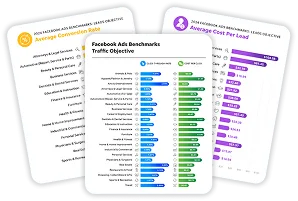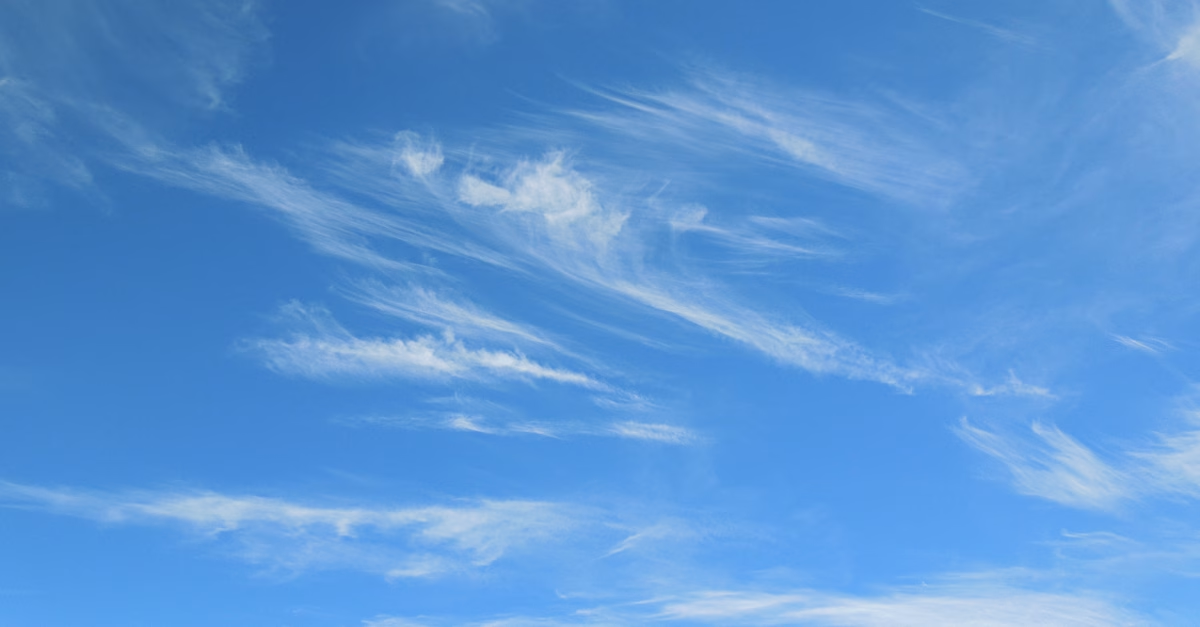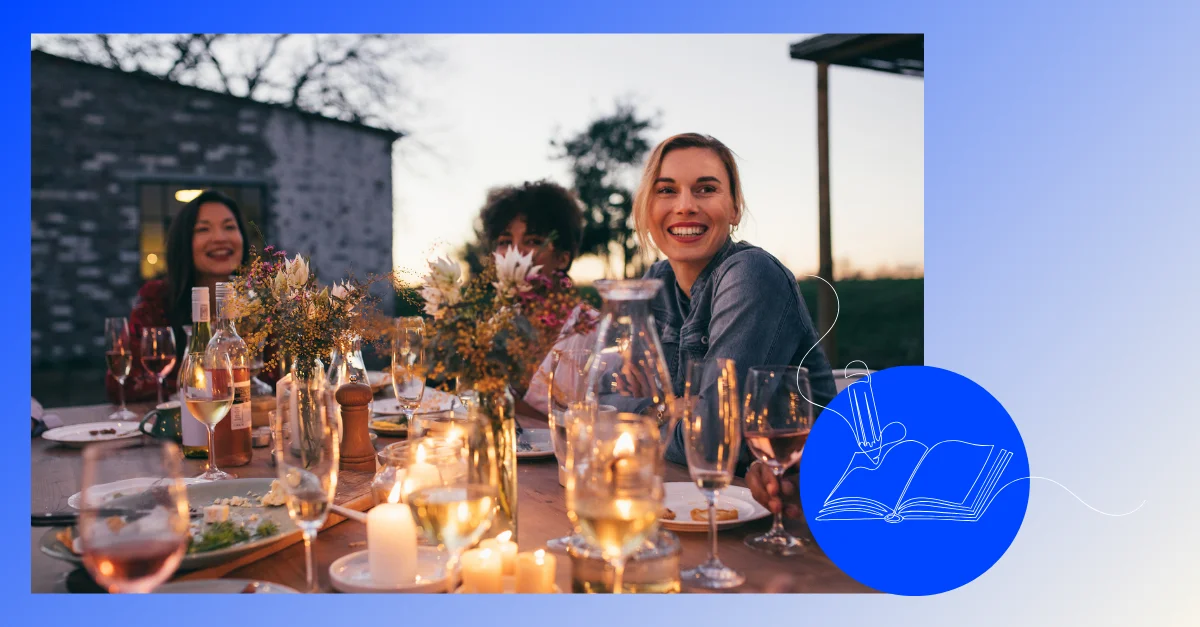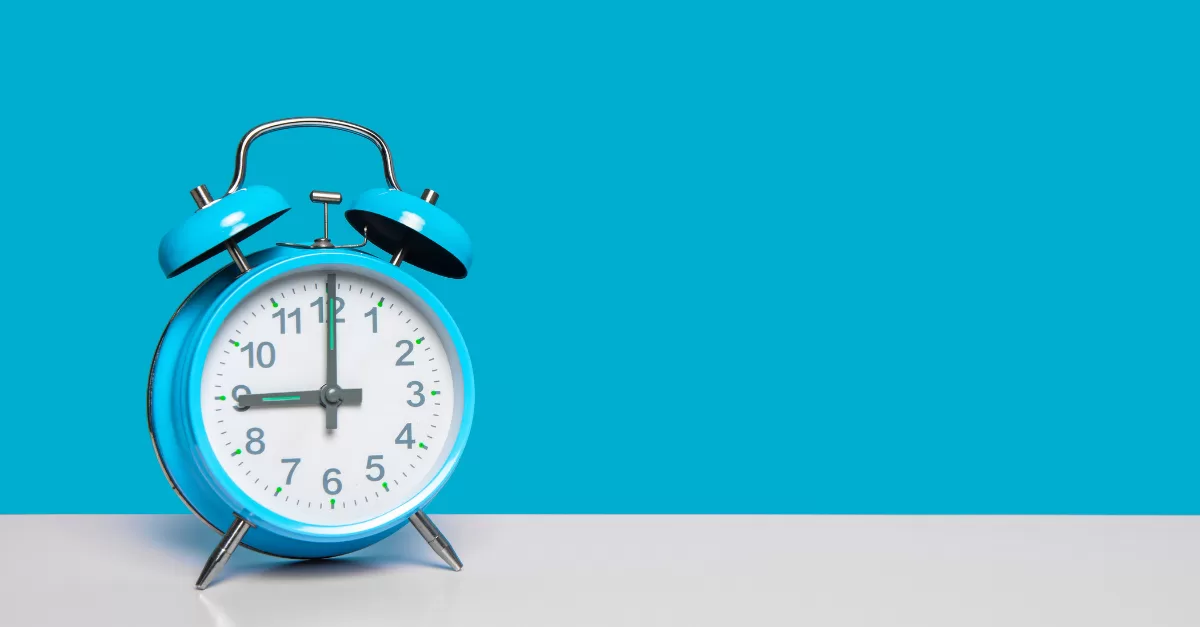Facebook continues to be the reigning champ of social media sites, as the #1 spot where friends connect and share online. More than just a meeting place for friends, Facebook has grown into a venue for businesses to market themselves through interaction with customers and self-promotion.
In this post we will be looking at seven ways you can use Facebook for marketing.
Whether you’re a big corporation or a small local biz, Facebook is a powerful marketing tool – it’s a great space to keep customers informed, develop brand identity, and broaden your reach.
1. Making the Most of Your Facebook Business Page
A Facebook page is a great free marketing tool for businesses. These pages let businesses identify themselves – not just through listing product offerings and services, but also by sharing links, images, and posts on a customizable page to give a better sense of a business’s personality and character.
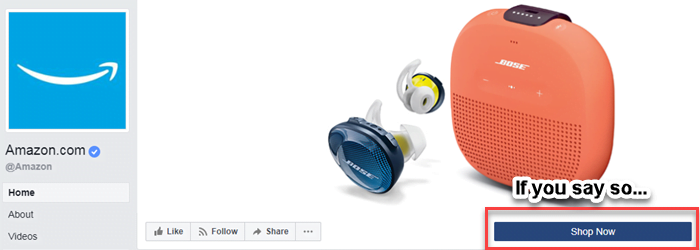
Your Facebook business page is a great spot to develop your brand identity and show your human side. Facebook is where you can loosen the tie a bit – don’t be afraid to be funny.
Ultimately you should consider what your key audience would want to see. Share social media images, links, videos, anything, as long as it is connected to your business and it seems like something your target audience would enjoy. Use Facebook Insights to see what resonates most with your audience.
In addition to hilarious videos of dogs walking in tiny shoes, a store specializing in footwear might also post an article about how to measure your foot size accurately, what kind of shoe inserts are best for different sore feet woes, etc. A nice mix of humor, educational resources, and posts about your store updates is ideal.
Free guide >> 7 Fundamental Facebook Advertising Tips every advertiser should know.
2. Facebook Advertising: Classic Ads
Facebook offers its own form of advertising with Facebook ads, which appear in the side columns of the Facebook site. These classic ads are referred to more specifically as Marketplace Ads. They include a headline with copy, an image, and a click-through link to either a Facebook page, a Facebook app, or an outside website.
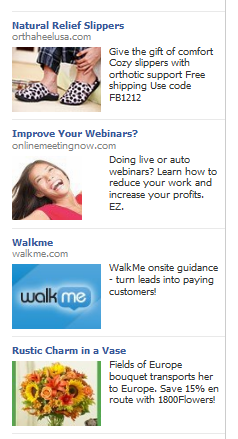
Implementing Facebook advertising into your Facebook marketing strategy is one possible technique for increasing likes or driving website clicks.
Facebook advertising features include:
- Demographic targeting by Facebook user data on age, location, education, and interests.
- The ability to set ad budgets.
- Ad testing, in which multiple ad versions can be run simultaneously in order to compare ad designs and setup.
- Built-in ad performance measurement tools.
- The ability to advertise for your particular area—great for local businesses.
Facebook doesn’t release information about their ad CTRs, so it’s difficult to know how successful Facebook ads really are. In our Facebook Ads vs Google Display Ads Infographic, we found that Facebook ads generally have a CTR of 0.051%, and an average CPC of $0.80; however, a business’s Facebook advertising cost can vary a lot depending on the targeting options set and competition.
Using Facebook advertising to increase your “Likes” can be very beneficial – once a user likes your page, they essentially become followers of your business page, and your posts will appear on their Facebook news feed.
This results in more users interacting with you and your brand, forming relationships that may end up translating to conversions in the future.
RELATED: 45 Fabulous Facebook Advertising Tips
3. Hosting Facebook Contests
Running Facebook contests, sweepstakes, or promotions is another Facebook marketing tactic that can increase fans and brand awareness.
When conducting a Facebook contest, be aware that contests can’t be hosted through Facebook itself (meaning you can’t ask for likes as entries, have people write answers in the comments, etc.) Businesses must use a third-party app for creating their Facebook contest, then direct users to the app from their Facebook page.
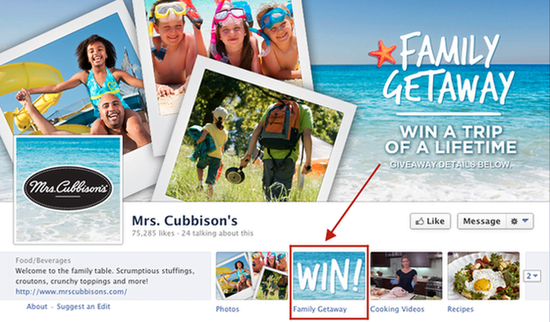
There are plenty of paid tools to help you do this, as well as some free ones. Shortstack offers a number of free contest templates, so long as your page has under 2,000 likes. Pagemodo also has a free option. Many third-party Facebook contest apps offer free versions, but your options with them are limited.
4. Facebook Promoted Posts
Facebook Promoted Posts let Facebook page owners pay a flat rate in order to have their individual Facebook posts reach a certain number of users, increasing a specific post’s reach and impressions.
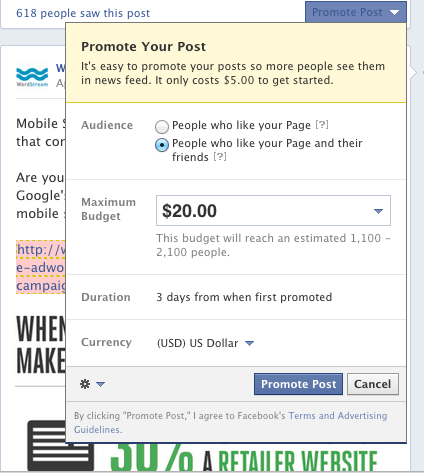
Some businesses have asked – why should I have to pay to ensure that my post is seen by users who are my followers? If a user has liked my page, they should always see my posts on their news feed, shouldn’t they? The answer to this question is no, because it assumes that users spend every waking moment of their life on Facebook’s news feed. For the health and safety of your Facebook fans, we hope this isn’t true!
If a fan of yours happens to be looking at their news feed when you post your story, they are likely to see it, but even then there is no guarantee if their news feed is swamped by other posts. That’s where Promoted Posts comes in – it ups your chances of being seen on a user’s news feed. Facebook Promoted Posts are shown to existing fans, with an added option to reach friends of fans.
Promoted Posts are easy to set up – just click the button beneath any of your page posts.
While the flat rate simplifies the process, Promoted Posts lack the targeting options offered by other Facebook ads.
5. Sponsored Stories
Sponsored Stories are a type of Facebook ad that shows a user’s interactions, such as a Facebook like, to the user’s friends.
Sponsored Stories seeks to capitalize on the “word of mouth” marketing concept. If a user sees that three of his friends like a certain page, he is more inclined to pay attention. The goal of Sponsored Stories is to have a user take the same action as their friends. Advertisers can choose to show friends “likes” if they want more page likes, show friends who have “claimed this offer” if a business wants more users to claim offers, etc.
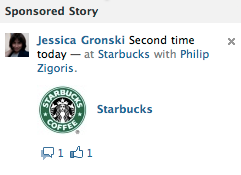
While the action performed by a friend liking a page or claiming an offer is automatically posted in a user’s news feed, these posts easily get overlooked. Sponsored Stories get preferred positioning, capable of appearing in news feeds and the right side bar. Sponsored Stories is also the only ad format available on mobile devices.
Sponsored Stories don’t only apply to likes or offers – they can be used with any Facebook Open Graph app. If a friend has just installed Scramble With Friends on Facebook, Sponsored Stories can show users that their friend has just played the Scramble game, with an invite to “challenge them,” “play with them,” or any similar variation.
Facebook claims that Sponsored Stories have 46% higher CTRs and 20% lower CPCs than regular Facebook ads, making them a very serious strategy for marketing on Facebook.
Facebook Sponsored Stories can be created easily through the Facebook ad create flow. Open Graph Sponsored Stories with a customized call to action require advertisers to use a third-party provider.
6. Facebook Open Graph
Facebook Open Graph lets businesses label a user’s action with their app. Billions of interactions are posted with Facebook Open Graph every day.
Businesses can create third-party apps that connect to a user and post a notice on Facebook when a user performs a specific action with the app. Facebook’s Open Graph allows for creative interactive options outside of the standard “like” and “comment.” Posts can suggest that users “listen,” “taste,” “read,” – it’s up to businesses to get creative.
Virtually any time a site or app prompts users to sign in to Facebook, it has something to do with connecting the user with the Facebook Open Graph.
Spotify is a great example of how Facebook Open Graph becomes a powerful Facebook marketing tool.
It all starts with a Facebook login prompt.
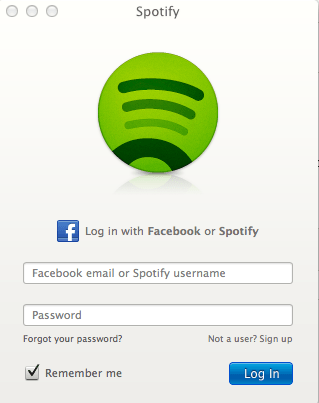
This is followed immediately by a permission request, which many users click through with little thought. I actually discovered that I had given permissions to 130 apps, 95% of which I don’t recall the reasoning behind.
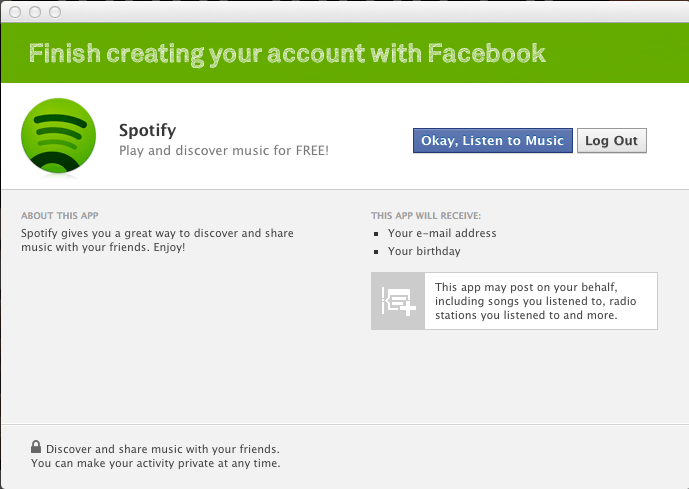
Once permission has been obtained, Spotify is able to stream what songs a user is listening to on a friend’s news feed.
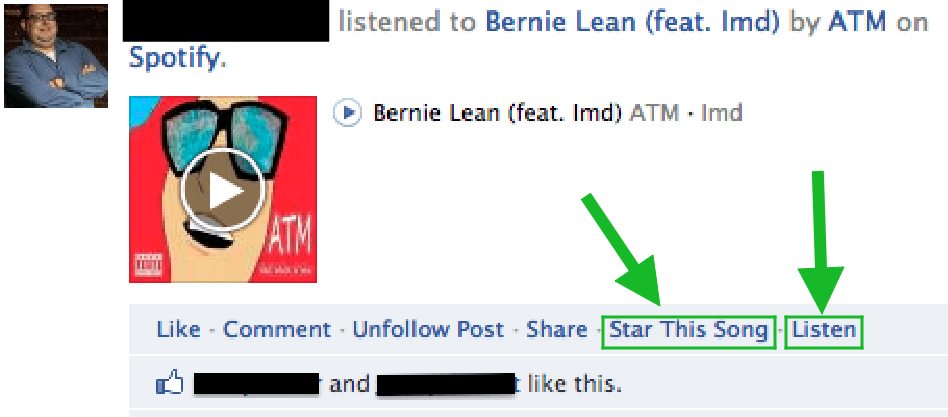
Pic borrowed from Justin Lafferty of AllFacebook.com
Notice that users are given a variety of options – they can like the song their friend is listening to, listen to the song themselves, or star it as a favorite in Spotify.
Open graph actions like these are unique enough to stand out from the cluttered craziness of a user’s news feed.
Many Facebook games make frequent use of Facebook open graph actions, posting a notice when a user has completed a level or won an achievement.
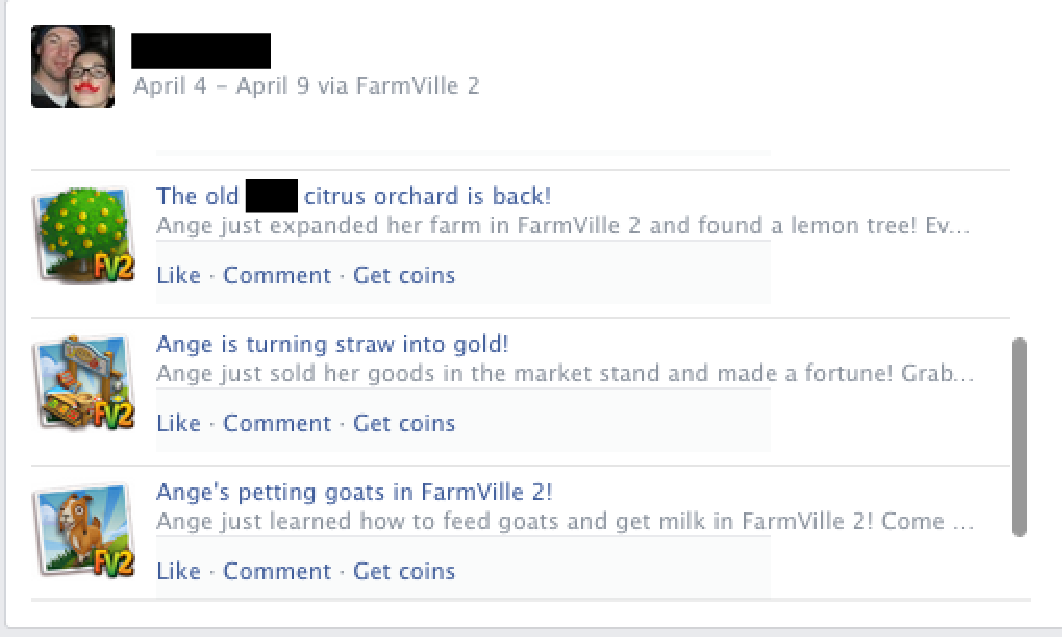
Farmville. Oh joy.
Open graph actions are being categorized as a new type of consumer story, taking advantage of the word of mouth phenomenon. Open graph posts are more meaningful to users because they are being generated by a familiar friend, not simply a brand, making them the latest and greatest of Facebook marketing tools.
7. Facebook Exchange (FBX)
Facebook Exchange lets advertisers take advantage of ad retargeting on Facebook through real-time bidding. Advertisers can target audiences based on web history data – when a user visits a product page on a retailer’s website, but fails to make a purchase, the retailer can then display an ad for that same product on Facebook with FBX.
While Facebook retargeting ads were only relegated to the side columns, recently these ads have been allowed to appear in news feeds, the most valuable Facebook real-estate. This is great news for FBX advertisers, since response rates for news feed ads are 10 to 50 times higher than that of ad placements in the right column.
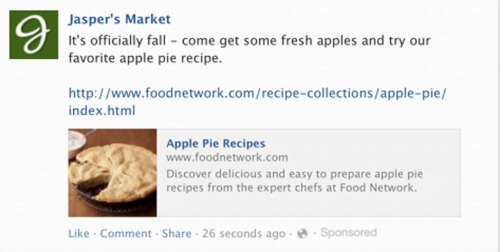
So how do Facebook Exchange ads perform? The CTR for Facebook Exchange ads is 40% lower than for other web retargeting ads, like those offered by the Google Display Network. Other retargeting ads are also cheaper, with price per unique clicks costing 80% less than Facebook retargeting ads. Still, in terms of cost-per-impression and cost-per-click, FBX ads are considerably cheaper, so the monetary benefits depend on your business’s needs. These numbers are also subject to change as FBX ads begin to appear more often in the news feed.
RELATED: Instagram vs Facebook–Which is better for your business? Find out here!

